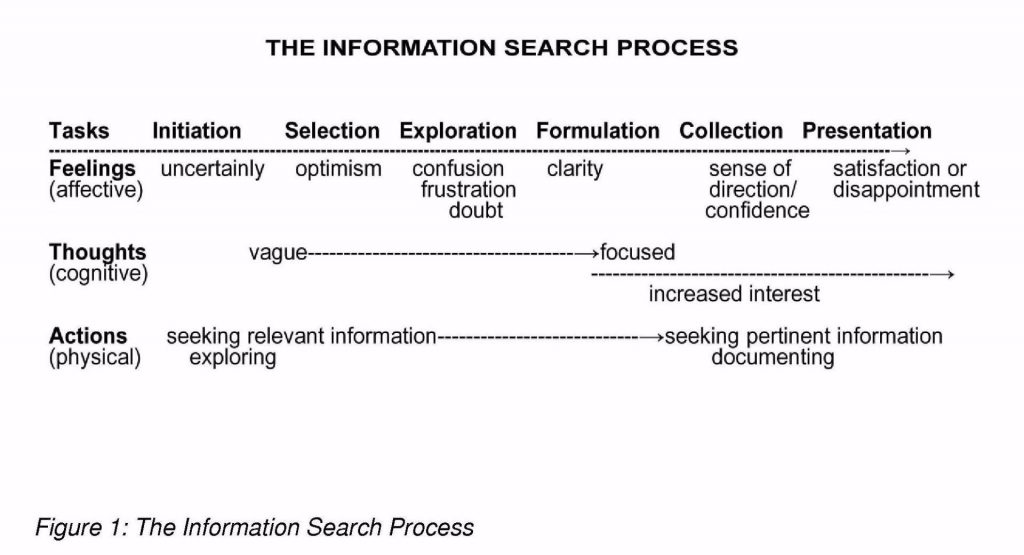

“Would your learners come back to your class tomorrow if they didn’t have to?” –Trevor Mackenzie

I have a tall order for a Monday morning: we’re being very honest with ourselves today!
If you’re a more experienced teacher, you might realize upon self-reflection that it’s very tempting to fall into a rut. Because, let’s face it, teaching is exhausting. Tailoring instruction to your specific students, allowing for exceptionalities of all types, being creative, giving constructive feedback, entering grades, calling parents… I’ll just stop the list right there.
However, it does us good as educators to be reminded that our attitudes, tone, and demeanor dictate the paths of learning in our classrooms. I think it’s fair to say that in an average American public school, there are a lot of demands being made on teachers which can obscure our vision. How can we break through that fog to rediscover the joy and fun of educating others?
Let Guided Inquiry Design lead the way! This inquiry model isn’t effective solely for the students, but also for the educators. When was the last time you put yourself in your learners’ shoes? Done something you’d never tried before? Read something about which you knew absolutely nothing? Read something that you knew would be very difficult? Put yourself outside of your comfort zone? Engaging in these things makes us feel like learners and discoverers again, which means remembering what it’s like to feel uncomfortable and anxious and overwhelmed. We know this is exactly what happens to learners thanks to the Information Search Process research conducted by Kuhlthau and reaffirmed over the past 2 decades!

This week, I’m going to share some ideas that I plan to present next week at the South Carolina Association of School Librarian (SCASL) conference in Greenville, SC. I will be encouraging fellow librarians to take steps to foster an inquiry mindset with their students based on the GID model, sharing some successes and struggles I have had. In this blog post today, I’m going to focus on two issues which I personally believe greatly influence our level of success: time and patience.
How many times today have you already said, “I don’t have time for that!”? Keep track and analyze your results. Time hasn’t changed; we still have 24 hours each day! Librarians hear that response a lot when we suggest alternatives to students taking notes from PowerPoint presentations or reading from a textbook. Although we do live in the age of standardized testing, there are still a lot of courses at the high school level which are not tested. Be honest with yourself about how you spend your time with your students. You don’t need to worry about drill-and-kill with content area knowledge if students are encountering your content in authentic texts and authentic learning activities (like visiting a museum, listening to a guest speaker, interviewing their local government representative). Remember yourself as a student. If you didn’t like to read your textbook when you were a student, then there is no chance your own students do.
Have you ever passed out a research assignment to students as the beginning of a unit? Do you only allow students a day or two to find information? Librarians know from experience that research is often presented in this way. If you find yourself dreading a research assignment as much as your students, then you know it’s time for a change. Students who feel pressured to complete work quickly will not turn in quality work, nor will they probably care because an intent to learn has not been established. Yes, exploration and discovery take time. But what a useful way to use the time we have! Partner with fellow teachers and librarians in your building to help brainstorm and share resources. There is never a reason to go it alone.
Be willing to honestly examine your own attitude toward time. You teach your students about what is important through your words, actions, body language, and tone. Make exploration and discovery something you can’t wait to do either, and be the learning role model for your students. As Kuhlthau (2015) states in Guided Inquiry: Learning in the 21st Century, “Guided Inquiry has the power to excite students about using resources for learning” (114). Furthermore, “Sources from the community enliven the inquiry process” (115). Use your time to find resources beyond your textbook or PowerPoint presentation: the school library, fiction, objects, museums, experts, parents, public library, business professionals, community officials.
Guided Inquiry Design states that during inquiry, the learning team “uses modeling, listening, and encouraging” to engage and guide students. Prioritize time in your classroom and library to model curiosity, listen to students throughout their process of discovering information, and encourage questioning.
These ideas naturally lead into the second issue I believe is greatly important: patience. I am the first to admit that I struggle with this one! Patience and time are directly linked. If students are going to build their own knowledge through an inquiry stance and develop information literacy skills, then they have to be the ones doing the learning. We don’t need more research and books to prove that to be true again and again. How many times did it take you to truly learn something well enough that you could teach it to someone else? Probably more than once! Allowing students to make mistakes, maybe even on purpose, so they can learn from them is critical. Avoid telling students answers. Use questioning to guide their thinking.
Moreover, being patient with someone shows that you care. Being patient shows that you are willing to give your time to someone else. When students trust their educators, a safe learning environment is established and they are willing to take more risks which can lead to more discoveries. Be patient with learners as they reflect on their abilities in order to make goals, then give them the time to reach those goals.
Dedicating time and patience to the inquiry process has many rewards! Return to the question which begins this post. Do you even want to return to your classroom? Being excited and curious, having patience, and using authentic sources of information will influence how students answer.
In my next post, I will share some ideas for the Open, Immerse, and Explore phases of GID and why they are so important to the inquiry mindset.
–Jamie Gregory, NBCT Library Media, Duncan, SC
@gregorjm jamie.gregory@spart5.net
Past GID blog posts: https://52guidedinquiry.edublogs.org/2017/06/19/it-all-starts-with-a-question/; https://52guidedinquiry.edublogs.org/2017/06/21/concepts-and-questioning/; https://52guidedinquiry.edublogs.org/2017/06/23/keyword-inquiry-log/; https://52guidedinquiry.edublogs.org/2017/06/25/individualized-reading-plans-and-reflection/